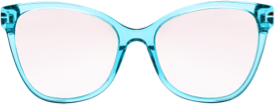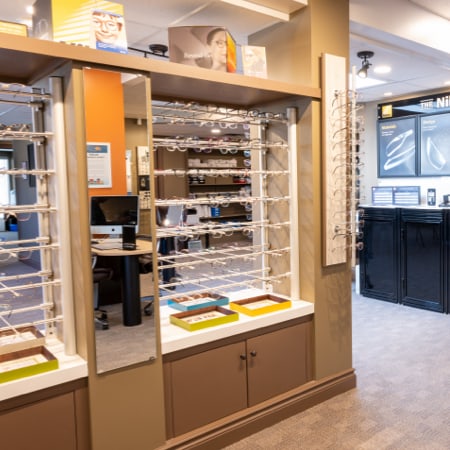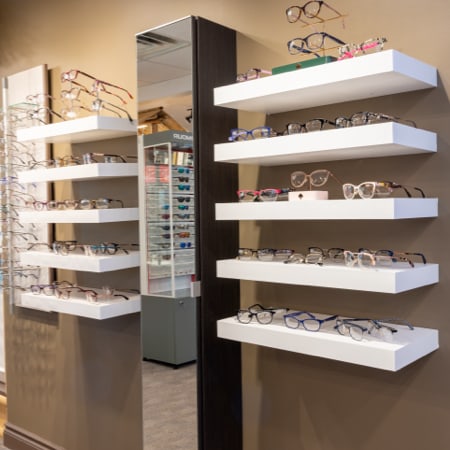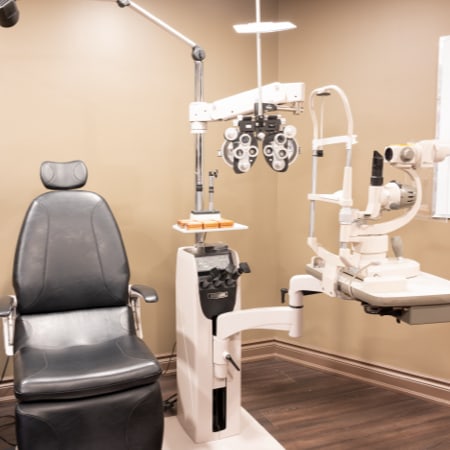A chalazion is a bump on the eyelid. Chalazions often start as an annoyance, but may become more uncomfortable over time. While many chalazions resolve on their own, some may harden and linger longer than expected—raising concerns about whether they’ll go away without treatment.
A hardened chalazion may not disappear on its own and could require medical attention, especially if it persists or causes discomfort. Whether you’re managing one now or simply want to be prepared, understanding this condition is important to protecting your eye health.
What is a Chalazion?
A chalazion starts as a small lump on your eyelid. This condition is caused by a blocked oil gland (meibomian gland). Unlike a stye, which is linked to active infection, a chalazion is usually a noninfectious inflammatory reaction. Here’s how it develops:
- An oil gland becomes blocked, trapping oils inside the gland.
- The buildup can harden over time, forming a visible lump.
- Occasionally, bacteria can become trapped, leading to further inflammation or even infection.
Although often harmless, chalazions can grow large enough to press against the eyeball, causing blurred vision, increased tearing, or sensitivity to light. Proper care and attention can prevent these annoyances from escalating into bigger issues.
Common Causes of Chalazion
- Poor eyelid hygiene
- Chronic blepharitis (inflammation of the eyelid)
- Skin conditions, such as rosacea or seborrheic dermatitis
- Previous styes
- Medical conditions that impact oil production, like diabetes
Understanding these causes can help you recognize your triggers and take preventive measures.
How to Recognize a Chalazion
Before we discuss treatment and next steps, it helps to identify a chalazion correctly. Chalazions often appear in the center of your eyelid, and may cause accompanying symptoms such as:
- Mild redness and swelling around the lump
- Sensitivity to light
- Increased tearing or eye discharge
- Blurred vision if the lump presses on the eye
These symptoms are usually harmless but can become uncomfortable. Keep in mind that chalazions can easily be mistaken for styes, which are bacterial infections of smaller lash glands. While the two might seem similar, their treatments differ significantly, so prompt identification makes a difference.
Are Chalazions Permanent?
Good news: chalazions aren’t permanent! Most go away on their own, especially with proper care. However, this timeline can vary based on individual habits and health history. For those dealing with a hardened chalazion, several steps can encourage healing:
- Warm compresses: Apply a clean, warm compress to the affected eyelid for 10–15 minutes, three to five times daily. This softens the contents of the blocked gland, encouraging it to drain naturally.
- Eyelid hygiene: Use a gentle cleanser or eyelid wipes to clean your eyelids daily. Removing oil and dirt buildup can speed up healing and reduce the risk of recurrence.
- Gently massage the affected area: Massaging the area promotes increased blood flow, assisting natural drainage. Use clean fingers to apply light pressure around the chalazion.
- Avoid makeup or contact lenses: Cosmetics and contacts can irritate the area or introduce bacteria. Give the area a break until the chalazion resolves.
If these at-home remedies don’t deliver results, or if your chalazion gets larger or causes discomfort, it might be time to contact your optometrist.

What Happens if a Chalazion Doesn’t Go Away?
When a chalazion becomes too large, hardened, or painful, a healthcare professional can step in to provide relief. Here’s what might be recommended:
- Medications: Topical antibiotics or steroid ointments may be prescribed if infection or inflammation seems likely. These treatments target and calm the underlying irritation.
- Steroid Injection: A cortisone injection can quickly reduce swelling and speed up healing, especially for stubborn chalazions.
- Surgical Drainage: For extreme cases, minor surgery under local anesthesia can drain the clogged gland. This quick procedure is often a permanent solution for hardened, persistent chalazions.
There’s no need to suffer in silence; with your optometrist’s help, relief is within reach.
Tips for Preventing Chalazions
Taking good care of your eye health can make a difference in helping prevent chalazions and other potential conditions.
- Daily eyelid cleaning: Use a warm cloth or eyelid-specific cleanser to wash away dirt, oil, and debris.
- Avoid rubbing your eyes: Touching your eyes transfers bacteria and irritants that clog glands.
- Replace makeup regularly: Old mascara, eyeliner, and other products harbor bacteria over time. Toss outdated items!
- Sleep without makeup: Always remove makeup before bed to avoid residue buildup.
- Manage rosacea or blepharitis: Keep underlying skin conditions controlled to avoid irritation.
- Healthy diet: Nutrient-rich foods with omega-3 fatty acids help support balanced oil production in the eyelids.
These preventive measures apply to everyone, but they’re particularly helpful if you’re prone to recurring chalazions.
Take the Next Steps to Healthier Vision
A chalazion, hardened or not, doesn’t have to disrupt your life. With effective at-home care, professional treatment options, and simple preventive steps, you can keep your eyelids healthy and your vision clear.
At Orillia Optometry, we prioritize your eye health and provide expert care tailored to your needs. If you’re dealing with a persistent chalazion or simply looking for guidance on prevention, our team is here to help. Book your appointment today and discover the personalized care that sets us apart.















